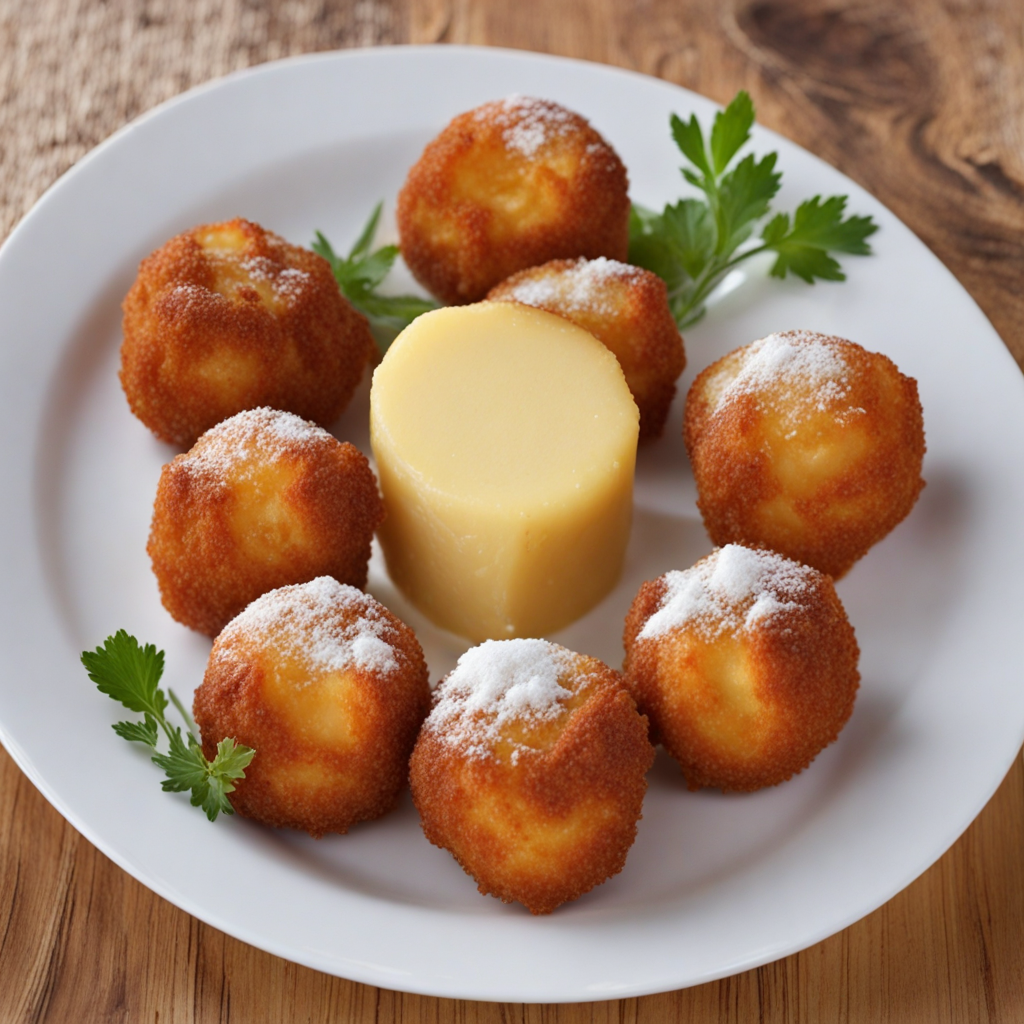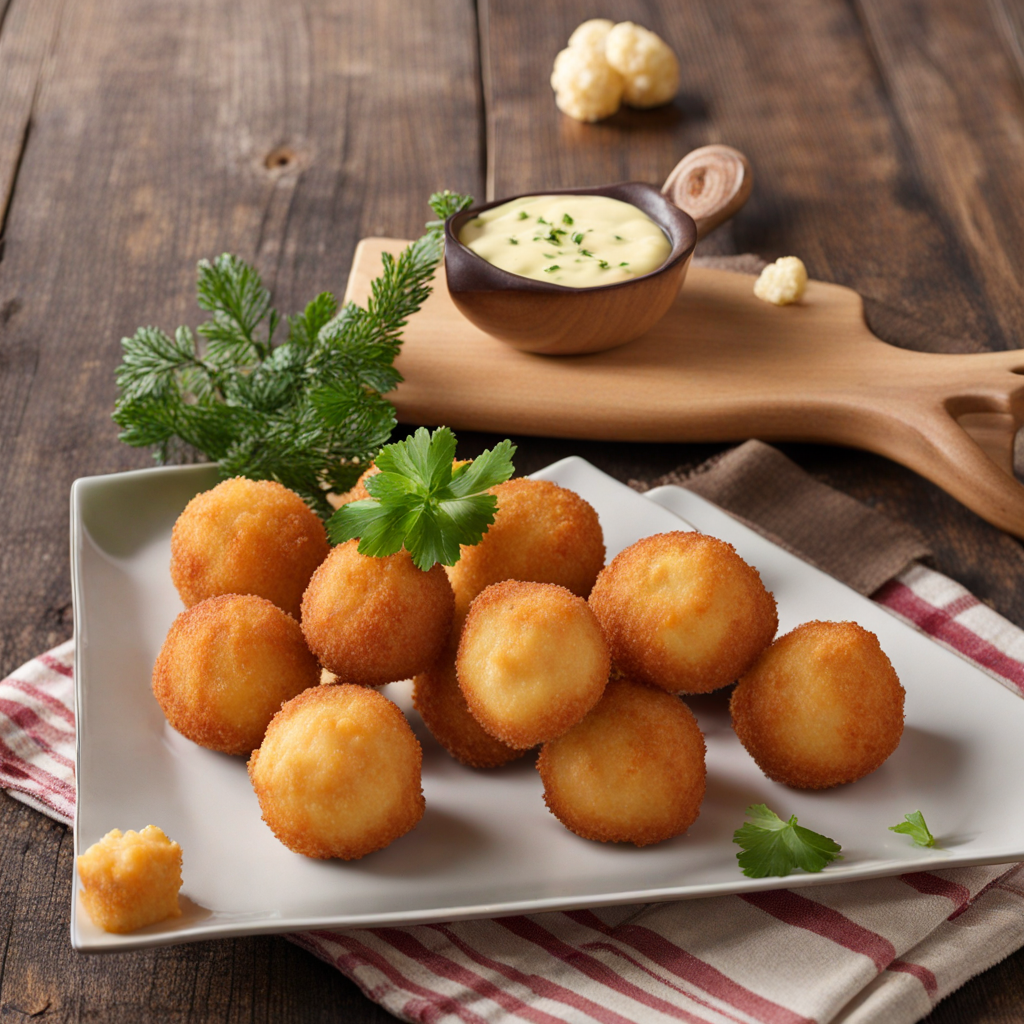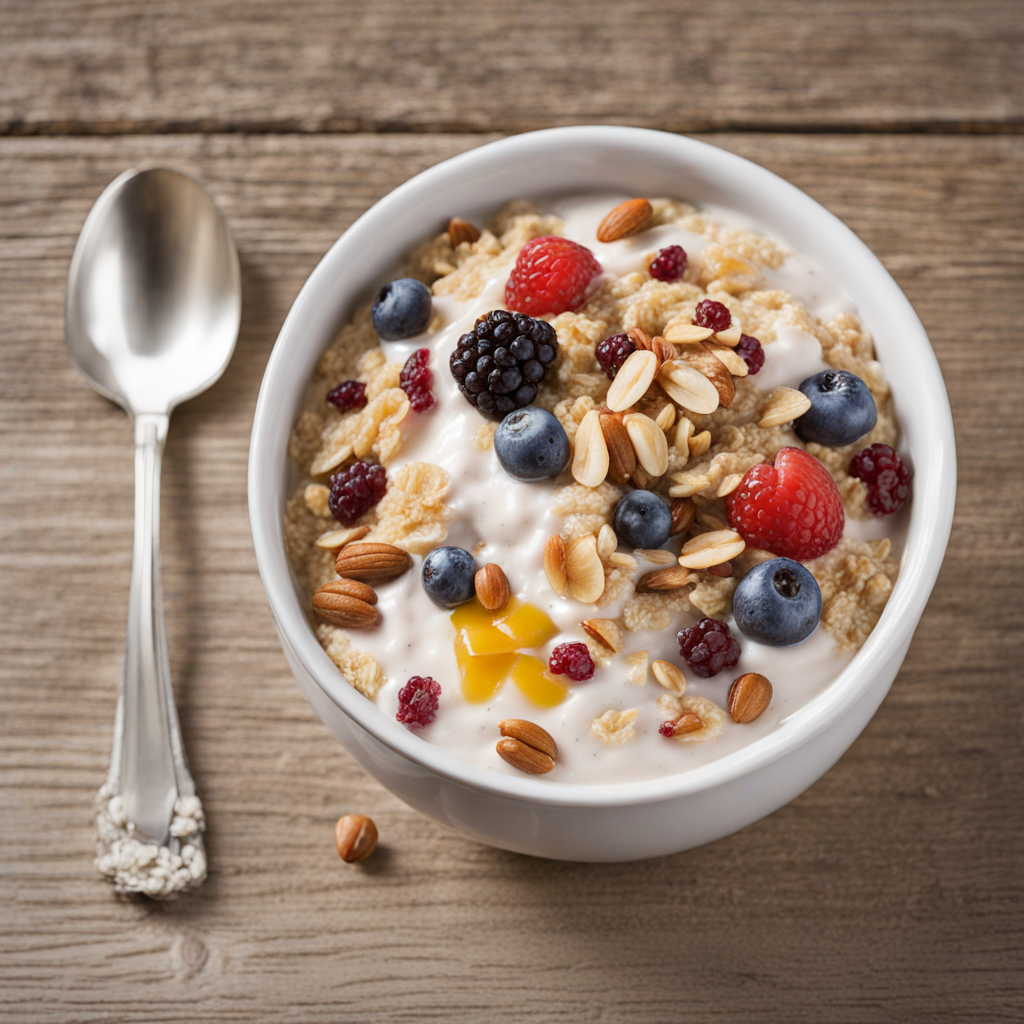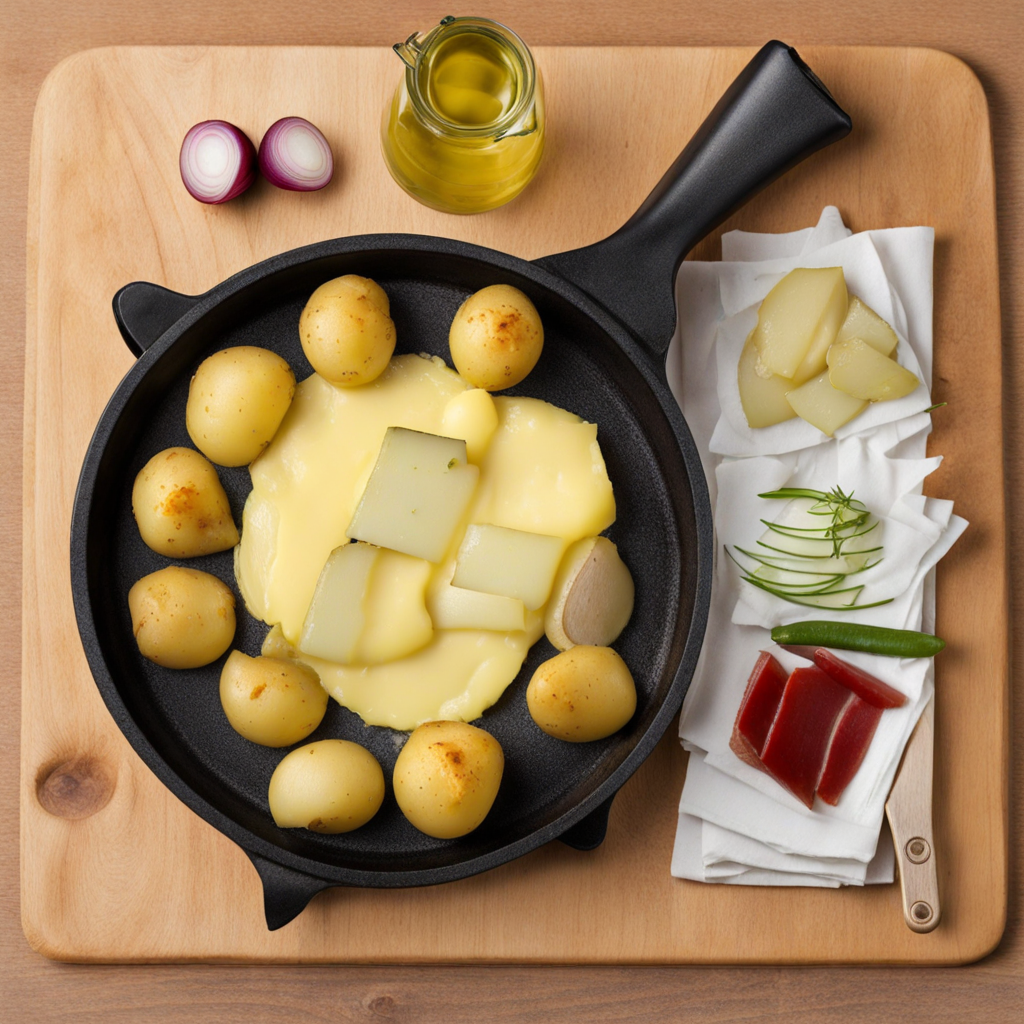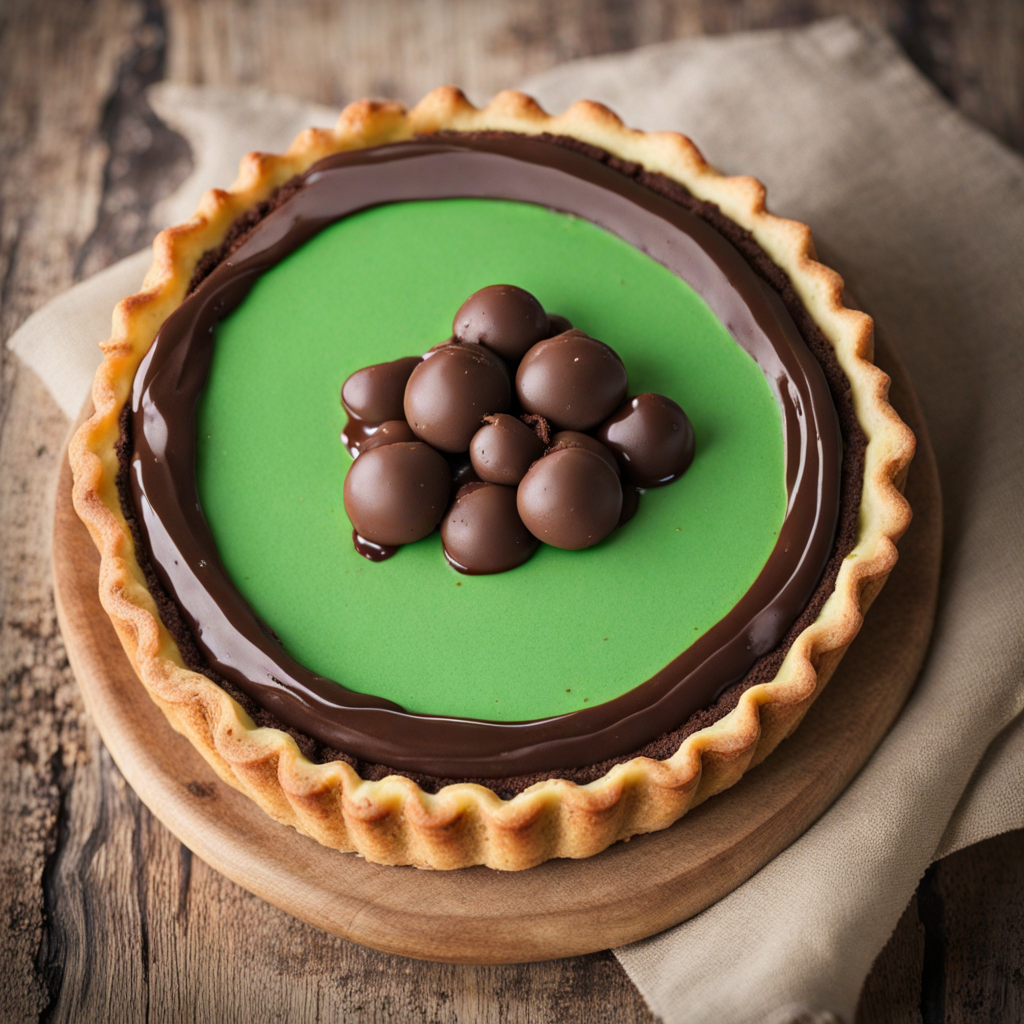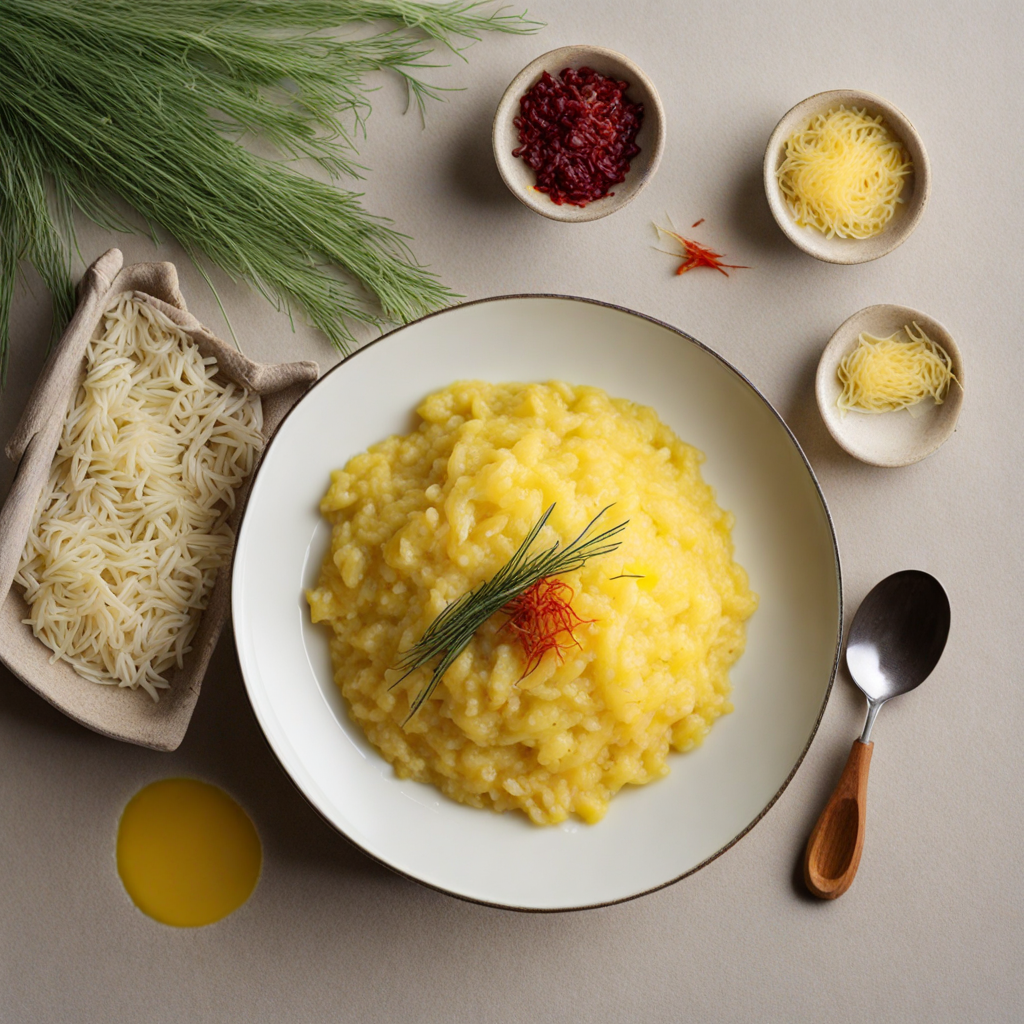Malakoff
Malakoff is a delightful Swiss dish that showcases the country's love for cheese, particularly its fondue traditions. Originating from the region of Neuchâtel, this savory treat consists of deep-fried cheese balls, typically made with a mix of Gruyère and Emmental cheeses. The cheese is blended with flour, eggs, and a hint of white wine or Kirsch, which adds a subtle depth to the flavor. The mixture is then shaped into small balls or fritters, which are coated in breadcrumbs before being fried to golden perfection. The result is a crispy exterior that gives way to a gooey, melty cheese center, creating a satisfying contrast in textures with every bite. What sets Malakoff apart is not just its delightful taste but also the experience it brings. Traditionally served as an appetizer or snack, these cheese balls are often accompanied by a side of tangy dipping sauces, such as a spicy mustard or a zesty garlic aioli. The combination of the crispy coating and the rich, molten cheese pairs beautifully with the sharpness of the sauces, making it an exciting treat for cheese lovers. Whether enjoyed at a rustic Swiss tavern or in the comfort of home, Malakoff offers an authentic taste of Switzerland that is perfect for sharing with friends and family. As you dive into the world of Malakoff, you'll find that it embodies the essence of Swiss cuisine—simple yet indulgent. This dish is not only a celebration of cheese but also a testament to the Swiss knack for transforming humble ingredients into something extraordinary. Perfect for cozy gatherings or festive occasions, Malakoff invites you to savor the rich flavors of Swiss culinary heritage while offering a unique, mouthwatering experience that is bound to leave a lasting impression.
How It Became This Dish
The Story of Malakoff: A Swiss Culinary Treasure Origins of Malakoff: A Culinary Legend Malakoff, a delightful Swiss dish, is a deep-fried cheese ball that has captured the hearts and taste buds of many since its inception. Its name is believed to be derived from the Battle of Malakoff, a significant conflict during the Crimean War in the mid-19th century. This battle, fought in 1855, was marked by the French and British forces' efforts against the Russian Empire. The connection between the dish and the battle, however, is more of a romantic legend than a historical fact. The dish has its roots in the French-speaking regions of Switzerland, particularly in the canton of Vaud and the city of Geneva. It is thought that Swiss soldiers returning from the Crimean War brought back culinary influences from their experiences abroad, leading to the creation of this delicious cheese fritter. The story goes that these soldiers, having tasted a similar dish during their time in the war, sought to recreate it upon their return, thus giving birth to the Malakoff. Cultural Significance in Switzerland Malakoff is not merely a dish; it is a symbol of Swiss culinary tradition and local identity. In the 19th century, Switzerland was undergoing significant changes, with the industrial revolution reshaping its economy and society. As Swiss people began migrating from rural areas to urban centers, there was a growing need for affordable and satisfying food that could be consumed on the go. Malakoff, with its crispy exterior and gooey cheese interior, fit perfectly into this new culinary landscape. Traditionally, Malakoff is made using a mix of cheeses, typically Gruyère and Emmental, which are grated and mixed with flour, egg, and spices. The mixture is then shaped into balls and deep-fried until golden brown. The result is a heavenly concoction that is crispy on the outside and oozing with melted cheese on the inside. It is often served with a side of garlic mayonnaise or a fresh salad, making it a versatile dish that can be enjoyed as a snack, appetizer, or main course. Malakoff has also gained cultural significance as a popular dish in Swiss bistros and restaurants, particularly in the western regions of the country. It is often featured on menus during festive occasions, family gatherings, and local celebrations, embodying the spirit of togetherness and hospitality that characterizes Swiss culture. Development Over Time: From Rustic Dish to Gourmet Delight As Switzerland evolved, so did the Malakoff. In its early days, the dish was relatively simple and rustic, appealing to the working class and soldiers who sought hearty sustenance. However, as culinary trends shifted and the appreciation for gourmet dining increased in the late 20th century, chefs began to experiment with the traditional recipe. Modern interpretations of Malakoff often include creative variations that incorporate different types of cheese, herbs, and spices. Some chefs have even introduced ingredients like truffles, smoked cheese, or infused oils to elevate the dish, transforming it into a gourmet delicacy. This evolution reflects the broader trend in Swiss cuisine, where traditional recipes are reimagined with contemporary flair while still honoring their roots. Additionally, the rise of artisanal cheese production in Switzerland has led to a renewed focus on high-quality ingredients. Local cheesemakers take pride in crafting exceptional cheeses, which have become essential components of the Malakoff. As a result, the dish has not only maintained its rustic charm but has also embraced a new level of sophistication. Malakoff in Popular Culture Malakoff's presence in Swiss popular culture is notable. It has been featured in various culinary competitions and food festivals, showcasing the best of Swiss gastronomy. The dish is often celebrated during the Fête de l'Escalade in Geneva, an annual festival commemorating the city's successful defense against a surprise attack by the Duke of Savoy in 1602. During this festive period, Malakoff is served alongside traditional chocolate and marzipan treats, creating a delightful culinary tapestry that reflects the city's history and culture. Furthermore, Malakoff has made its way beyond Switzerland's borders, becoming a beloved dish in neighboring countries and among Swiss expatriates around the world. Its rich history, comforting flavors, and versatility have made it a symbol of Swiss cuisine that transcends geographical boundaries. In various Swiss restaurants abroad, Malakoff is often highlighted as a must-try dish, allowing diners to experience a taste of Swiss culture, regardless of their location. The Modern-Day Malakoff Experience Today, enjoying a Malakoff is a sensory experience that invites diners to appreciate the dish's history while indulging in its rich flavors. Many Swiss restaurants pride themselves on their Malakoff offerings, often serving them in a convivial atmosphere that encourages sharing and celebration. The dish is typically enjoyed with a glass of Swiss wine or a local beer, creating a perfect pairing that enhances the overall dining experience. In recent years, there has been a growing movement toward sustainable and locally sourced ingredients in Swiss cuisine, and Malakoff is no exception. Many chefs emphasize the importance of using local, artisanal cheeses and fresh produce, ensuring that the dish reflects the terroir of Switzerland. This commitment to quality not only enhances the flavor of the Malakoff but also supports local farmers and cheesemakers, contributing to the preservation of traditional Swiss foodways. Conclusion: A Timeless Culinary Delight Malakoff is more than just a dish; it is a testament to Switzerland's rich culinary heritage and cultural identity. Its origins in the context of war, its evolution from a humble snack to a gourmet delight, and its ongoing popularity in both local and international cuisine all speak to its enduring appeal. As Swiss food continues to gain recognition on the global stage, Malakoff stands as a symbol of the country’s commitment to quality, tradition, and innovation. Whether enjoyed at a festive gathering, a cozy bistro, or a chic restaurant, Malakoff invites all who taste it to savor a piece of Swiss history and culture, one delicious bite at a time.
You may like
Discover local flavors from Switzerland


